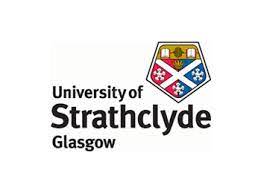University of Strathclyde: From 3D printer to international catwalk
It’s a new era for fashion as the National Manufacturing Institute Scotland (NMIS) opens doors for sustainable catwalk-worthy fashion accessories created using 3D printing technology.
Following a research and development project with the Renfrewshire based research centre, which is operated by the University of Strathclyde, a reinvented signature ROCIO handbag is set to debut at Paris Fashion Week next season in March.
Founded in Scotland, ROCIO is a luxury eco-fashion brand renowned for its decorative handbags, which are traditionally individually sculpted from harvested acacia wood over a meticulous 19 stage process. Celebrities including models Irina Shayk and Kate Upton as well as actress Susan Sarandon have all been photographed wearing the handbags.
Additive manufacturing
The brand was eager to explore new, sustainable ways of manufacturing and combine the technological capabilities at NMIS with its own craftsmanship to develop the inner structure of the bag that could be used as the basis for luxury fabric coverings. The collaboration began with a desire to uncover the capabilities of additive manufacturing, which is often considered more sustainable than traditional manufacturing techniques.
3D printing is a form of additive manufacturing where an object is built one thin layer at a time, allowing for unique customisation from various materials. The technique also enables the design and production of lightweight complex shapes and structures that would be impossible to produce by other means, reducing waste during initial product development, saving time and production costs.
Incorporating novel technologies into the manufacturing process opens doors to scale up operations to meet customer demand while simultaneously revolutionising the design process, allowing ROCIO to explore different materials and design constructs.
Atelier, a fashion business school in Spain, then used this prototype to create a final fully structured leather handbag – a first for ROCIO compared to its wooden product.
Endless possibilities
Andrew Brawley, NMIS Research & Design Engineer, said: “A core aim of NMIS is to engage with and support SMEs to facilitate a positive impact on the local economy and the wider industry. We have a team dedicated to helping SMEs in their route to innovation and exploitation of new goods and services in response to industry needs – and this ROCIO project is a prime example.
“We hope this will be the beginning of a long-trusted relationship with the team at ROCIO as this new exploration showcases the endless possibilities available.”
The structure created captured the same structured art form of ROCIO wooden bag sculptures, which enabled the brand to retain its signature characteristics in aesthetic and silhouette.
Hamish Menzies, ROCIO Creative Director, said: “We are really taken aback by the results. We’re at the heart of sustainable fashion and take pride in each accessory being a uniquely creative masterpiece. The pieces produced are works of art and this unique leather handbag concept delivers outstanding beauty in a structured art form which I believe pushes the boundaries of design.
“For us, exploring the use of a 3D printed prototype is more cost, time and material efficient in the long term. Through using this technology, we are one step closer to improving our endeavours to be even more sustainable, whilst unlocking and embracing the future capabilities of our industry.”

